Fishing Roundup: Another red snapper season is in the books; it's still a madhouse
Well, another two-day red snapper scramble has come and gone, and even with this year’s excellent conditions, the consensus remains the same: “It’s madness.”
Even by your general, run-of-the-mill federal standards, it's madness.
Pick an angle. It tends to look bad from all.
Limiting the Atlantic season to just two days forces too many boats onto the preferred offshore sites where the big fish feed. It also forces too many boats out there, 20 or so miles out, that shouldn’t be out there.
And for yet another year, it reminds everyone that the red snapper population is about as depleted as snakes in the Everglades.
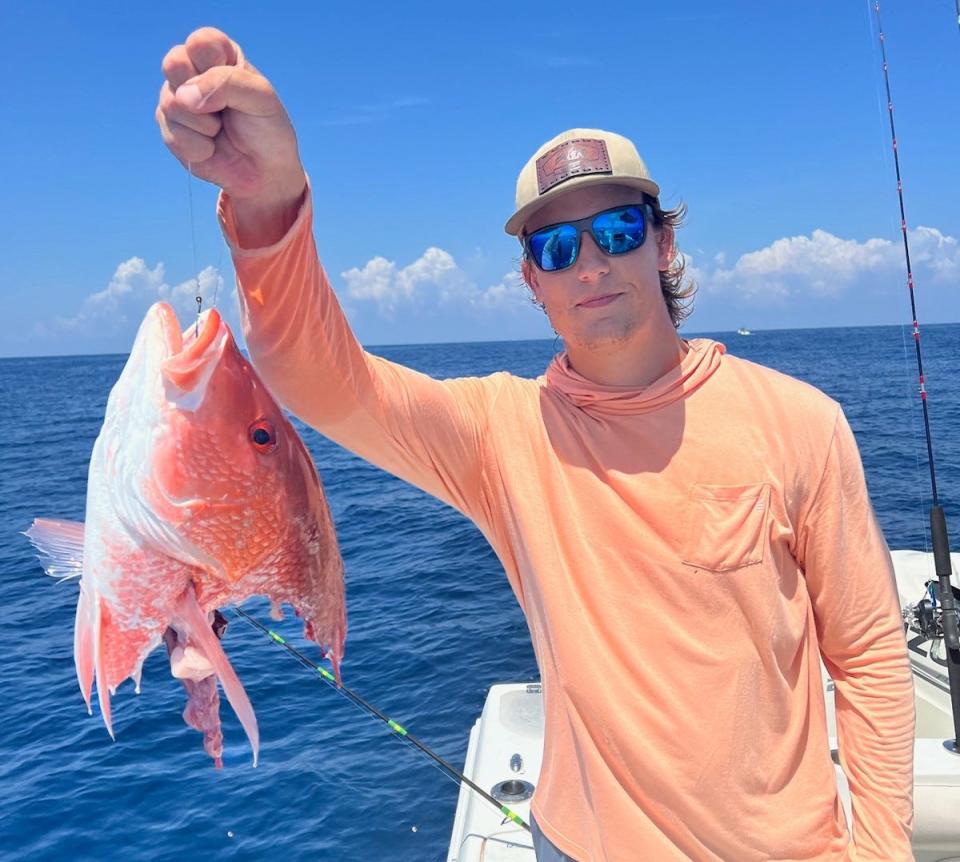
Same with the sharks, unfortunately. Many in the conservationist world will argue with that unfortunate crack, but man, talk about unintended consequences — protections on our dorsal-finned predators have worked beyond anyone’s wildest expectations.
Some say it’s exacerbated by the protection of red snapper — more and more red snapper, plausibly, leads to more and more sharks who are hooked on that tasty treat.
Hooked quite literally.
“In hindsight, one thing I would’ve done to fight the sharks was use a really heavy rig and get the fish from the bottom to the top as fast as I could,” says Joe Yarbrough Jr.
Joe sent along a picture that’s rather symbolic of many offshore fishing trips these days: He's holding a line attached to a red snapper head. Sharks aren’t a proud bunch, it seems — put a struggling fish in its sights, and lunchtime is made much easier.
Joe, an emergency room doctor for Halifax Health, was one of three guys on a boat last Friday, some 20 miles offshore at the “Party Grounds,” fishing depths of 80-100 feet.
“We hooked up with about six snapper that we lost to sharks,” he says. “From what I saw, I’d venture to say more fish were harvested to sharks than humans.”
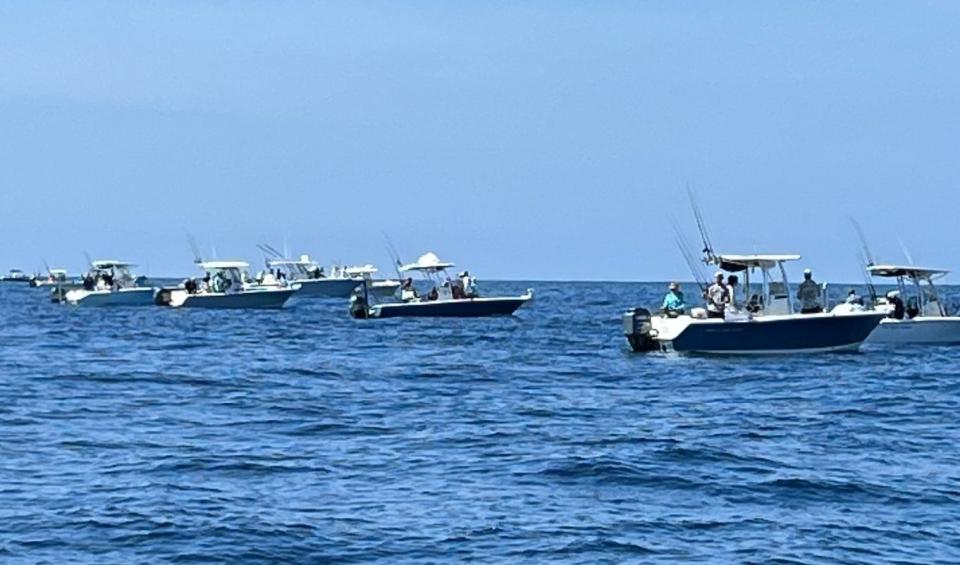
Through all the culling, they got their limit of one red snapper per person, but yet again, the whole experience was a head-shaker.
“We went out Friday morning just before sunrise,” Joe says. “It’s kinda dark out still, and there are boats everywhere. And people aren’t being too polite about how they’re exiting the inlet.
“You know how sketchy that inlet can be anyways. We were in a 26-foot boat, and a guy in a 42-footer is just blasting past you, you’re getting his wake, along with all the tide wake — it’s just a dangerous situation.”
For the record, according to Florida’s Fish & Wildlife Conservation folks, the red snapper population has indeed taken off in recent years. But the feds (through NOAA and the South Atlantic Fishery council) contend that too many are juvenile snapper and not yet at a level of sustainability.
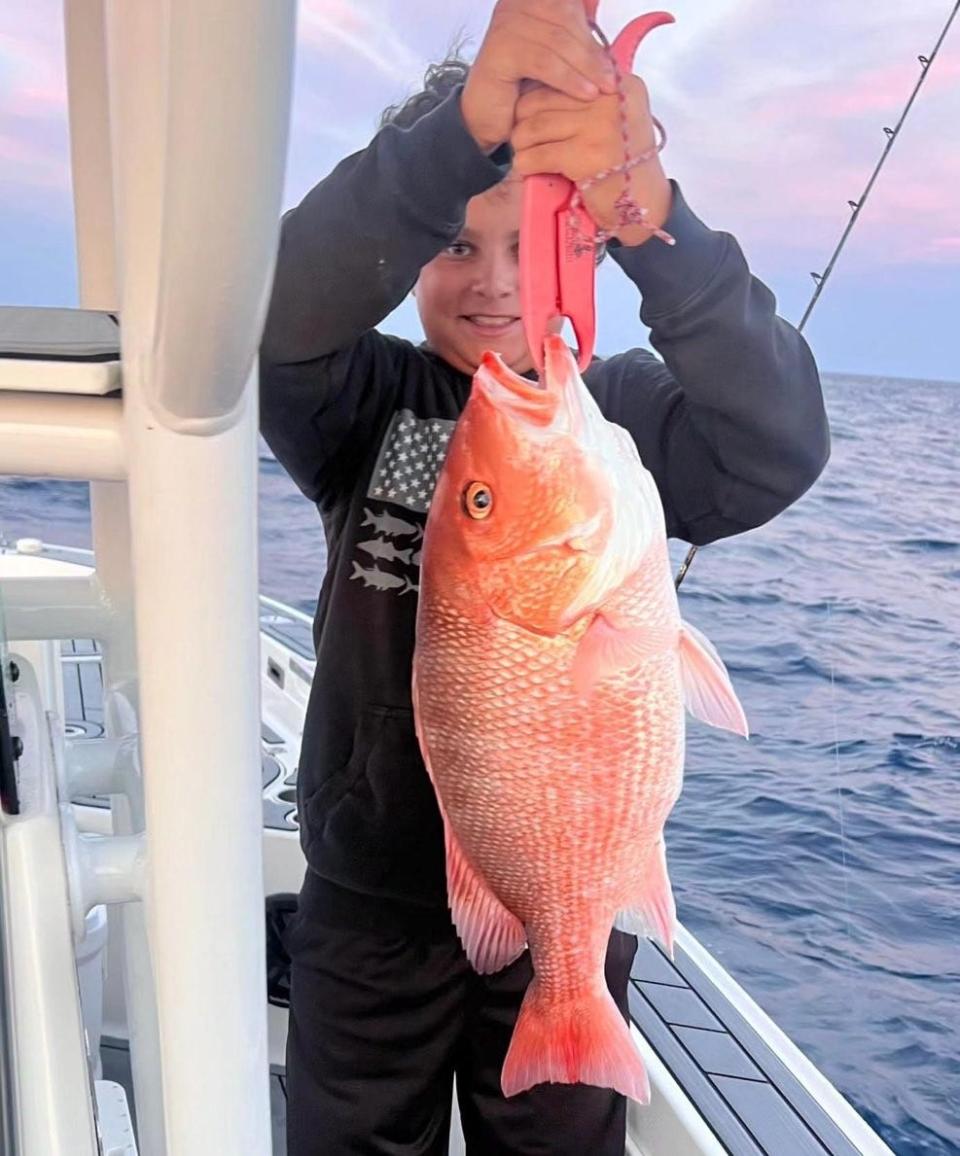
You’ll obviously get arguments to this at the docks, but admittedly, there are few marine biologists on the docks.
However, this ain’t the answer. Well, not a good answer, anyway. Maybe open up a few more weekends to relieve the pressure, introduce a per-vessel limit to keep the numbers at a desired level (and keep dudes from stuffing six buddies on a boat meant for two or three).
And if you have an answer for the sharks that might pass muster with the conservationists, fire away.
SEEING RED Red snapper bonanza has arrived; here's some info
TWO-DAY "SEASON" Don't blink, Atlantic 'season' for red snapper arrives soon; 'Cannonball run'
Halifax/Indian River
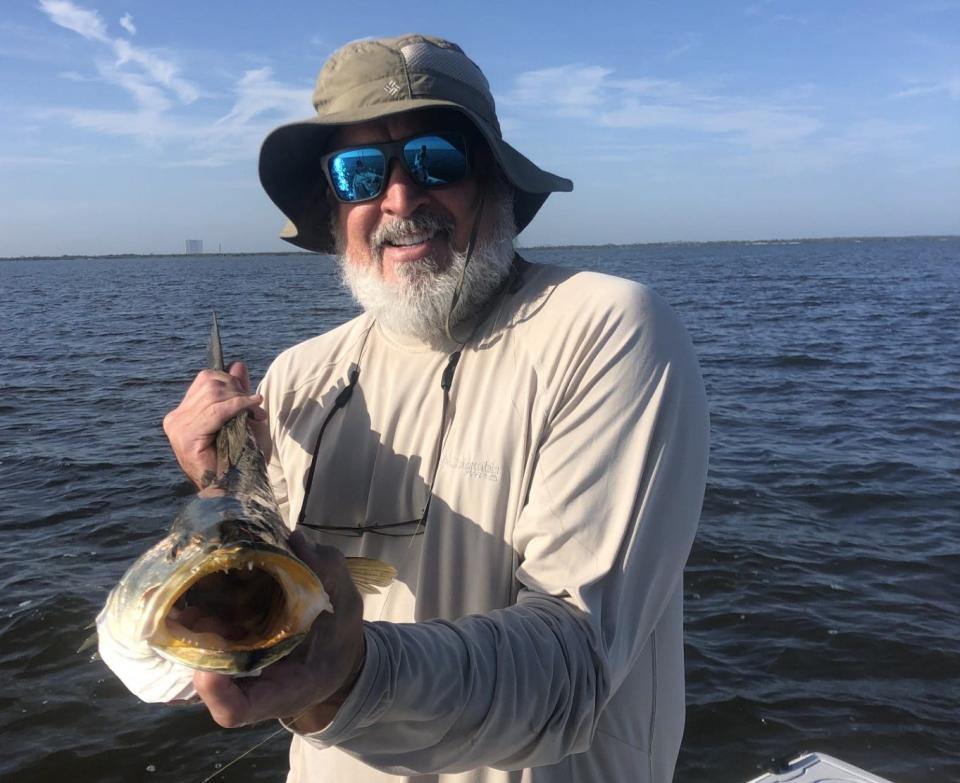
Mangrove snapper have been and will continue to dominate the inshore waters, particularly around oyster bars and pilings, but as advertised, also around strands of mangroves. Go figure.
“I could pretty much limit out every day if I wanted to,” says Capt. Jeff Patterson (Pole Dancer).
That limit is five per day, by the way.
If working the Ponce Inlet area, you can find some legal reds and catch-and-release (through August) snook. Further inshore, trout are still available in the early morning and around night-time dock lights. Reds, too, but they remain catch-and-release south of NSB’s south bridge until further notice.
Also, continued talk of the summer flounder makes you assume they’re a little more plentiful than normal this year.
“We’ve caught some nice 5- and 6-pounders,” Capt. Jeff says.
Surf
Here-and-there pompano, their palometa kin, and of course their crazy cousin — ol’ jack — are still coming to shore up and down the Volusia County beaches. But scroll the chat rooms or casually bring it up in conversation, and you’ll discover some folks are finding snook in the nearshore troughs these days.
And plenty of croakers and whiting, it seems. No surprise there.
Offshore
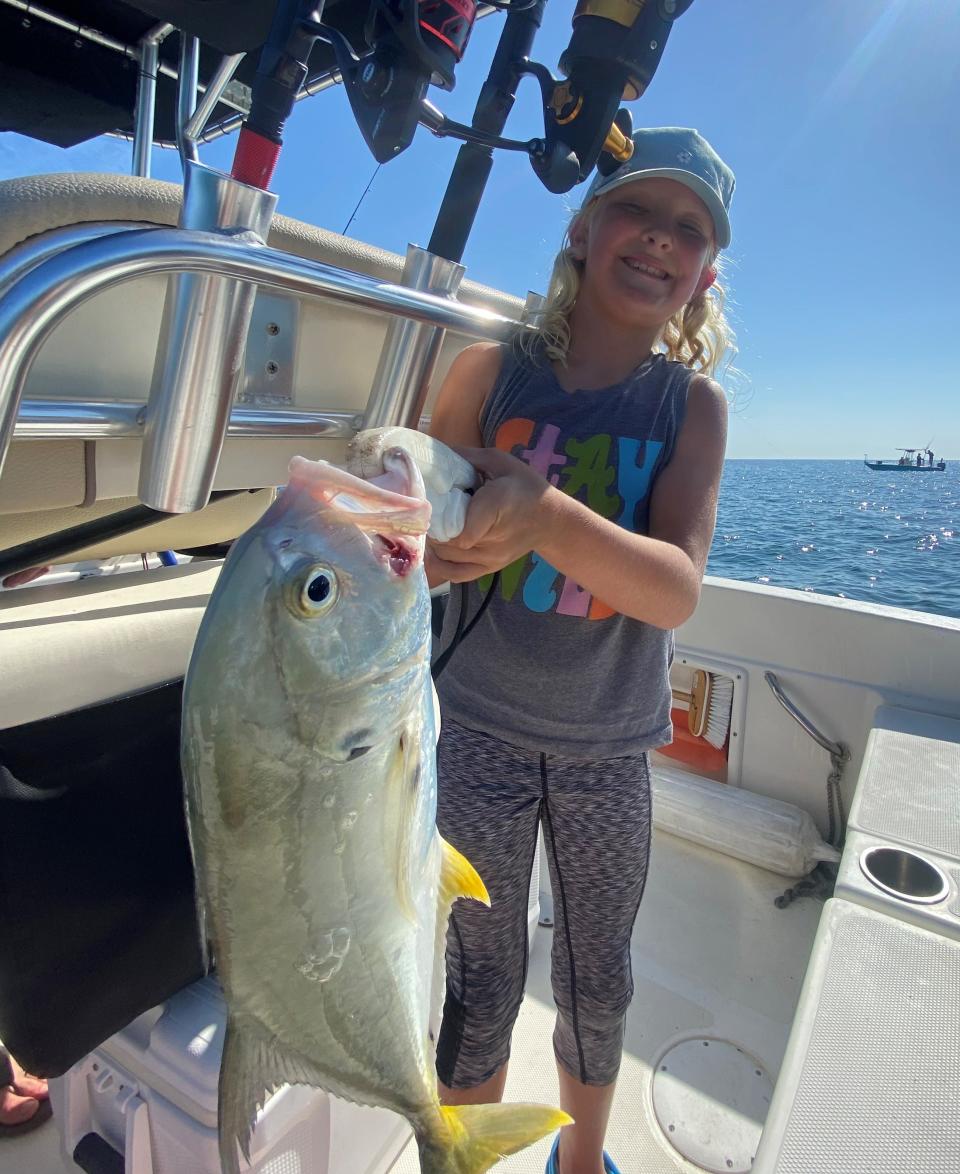
With the red-snapper madness put aside for now, it’s back to the summertime same ol’.
A variety of grouper out on “28 Ledge,” says Capt. Scott Housel (Sudden Strike charter), who has also been finding a bunch of those larger offshore mangroves “up in the water column.”
“Chumming with cut sardines or a frozen chum block work well to get the mangrove turned on,” says Capt. Scott, who says he’s been getting some flounder and croakers on mud minnows and live shrimp closer to civilization (Sunglow Reef, etc.).
Flagler
Early and late is the key, says Capt. Mike Vickers (Hammock Bait & Tackle).
“The night-time trout bite has been good this past week around docks and lights. The snook are still here but on the smaller side,” Capt. Mike says.
Some good-sized tarpon in the surf has been a recent highlight.
St. Johns
It’s not every year you keep catching specks this deep into summer, “but we’re not mad about it,” says Capt. Bryn Adams (Highland Park). “It’s a little unusual but not unheard of.”
Specks (aka speckled perch and/or crappie) are considered the filet mignon of panfish.
Generally speaking, bass are only available in the early morning along the main river, while stripers and some hybrids are holding tight near spring mouths.
Kingfish Tourney
One more reminder for next week’s (July 29) kingfish “gas saver” tourney sponsored by the Halifax Sport Fishing Club. Boats are limited to state waters — within three miles of shore — and no more than 20 miles north or south of Ponce Inlet.
More info: HSFC.com
Hook, line and clicker: Send us your fish pics
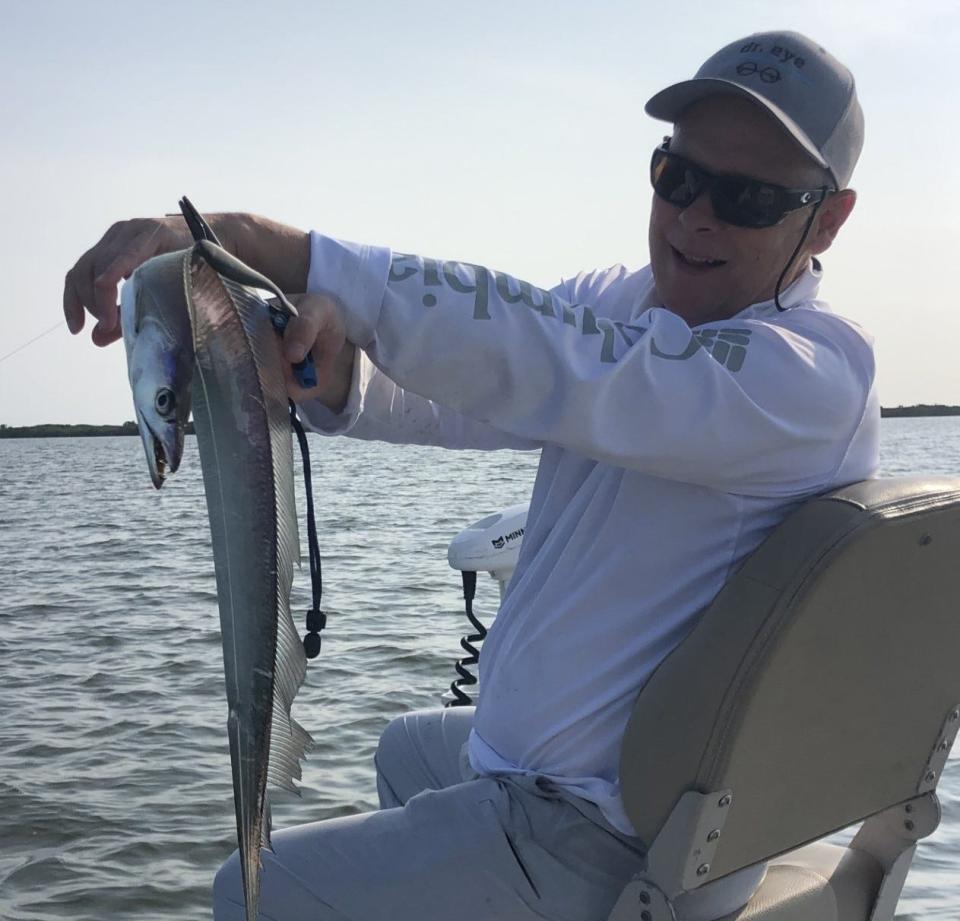
We want to see your most recent catch. Email your fish photos to ken.willis@news-jrnl.com.
Please include first and last name of angler(s), as well as type of fish (we're occasionally stumped). All are included with our online fishing report, and some occasionally make the print edition.
Do I need a fishing license?
You can find all the license info, including exemptions, on Florida's Fish and Wildlife Commission website: MyFWC.com. But the basics are: No: If you're 65 or older, 15 or younger, you don't need a license. No: If you're fishing with a licensed guide or charter boat, both of which purchase commercial licenses that cover their customers. Yes: Most everyone else, including visitors from other states. Yes: Even if you're a shore-based angler (shoreline, dock, pier, bridge, etc.). However: The shore-based license is free . . . But: You still need to register for that free license.
Where do I get a license and what does it cost?
Many bait shops sell licenses, as do the bigger retailers (Bass, Dick's, Walmart, etc.). Florida's FWC uses a third-party site for buying or renewing fishing licenses: GoOutdoorsFlorida.com. The cost: $17 for an annual license. Don't forget: Whether you're fishing fresh or saltwater, you need the specific license. Freshwater and saltwater licenses are both $17 annually.
I’m here on vacation, do I need a license?
Yes you do, and they're also available at GoOutdoorsFlorida.com or certain bait shops and big retailers. Cost: $17 for three days, $30 for seven days, $47 for a year.Also: Non-residents need to purchase that license even if they're just fishing from shoreline or shore-based structures. (Florida residents need that license, too, but they're free.)
This article originally appeared on The Daytona Beach News-Journal: Fishing Roundup: NOAA, FWC need to find a better red snapper answer

